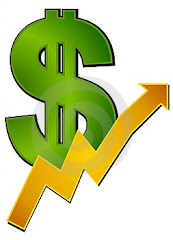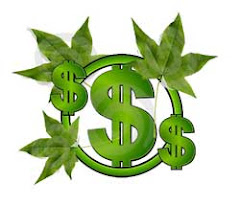Buying cleantech investment funds safer than individual stocks
by Gavin Adamson, TheGlobeandMail.com
As with hybrid autos and organic food, consumer demand is driving the growth of green investment choices, and new options come available every week.
“People are asking about green and socially responsible investments, and certainly more institutions and pension funds are paying more attention to the area,” says Adrian Mastracci, president of KCM Wealth Management in Vancouver. But for many investors, putting money into specific stocks of fledgling green companies can feel too risky, says Mr. Mastracci. To diversify, investors can turn to a handful of mutual funds and exchange trade funds (ETFs) that provide broad environmental criteria among their investment screens, along with “pure-play” green portfolios that hone in on specific industries in solar, wind and other alternative energy industries.
Passively invested ETFs automatically put money into a basket of funds defined by an index. The companies that market these ETFs charge management fees at a fraction of the cost of the mutual funds, whose stocks are selected by professional money managers. The management expenses are subtracted from the return of the investment.
“ETFs are just cheaper,” says Larry Berman, chief investment officer at ETF Capital Management, who owns a couple of green-focused ETFs in his portfolio. “They give you the index and you don’t have to worry about volatility in individual stocks.”
The tradeoff is that an actively managed mutual fund may outperform the markets or reduce volatility in a portfolio in the long run, whereas an ETF will track only an index. And Mr. Berman notes that green ETFs tend to be a little more expensive than those that mimic broader indexes because they are more expensive to run.
Generally, more focused investments should make up a smaller part of your portfolio, says Dan Hallett, president of his Windsor-based research firm, Dan Hallett & Associates, Inc. “The more narrowly you zoom in on the market, the more volatility you are likely to experience,” he notes, but if you’re prepared for long-term investing, volatility isn’t inherently bad.
SOLAR ENERGY
ETFs focusing on solar power are especially hot. In April, New York-based asset manager VanEck Global Investors, which sells several green ETFs, launched the Market Vectors Ardour-Solar Energy ETF, with a management expense ratio (MER) capped at 1.09 per cent. It follows the Ardour Solar Energy Index, tracking companies that earn at least two thirds of their revenue from solar technology products. The companies must also have a market capitalization of at least $100-million, a limit that will include many small cap names.
The index favours bigger companies. Its largest constituent is Renewable Energy Corp. AS, a Norwegian company involved in the production of the wafers used in photovoltaic technology, most commonly in solar panels. First Solar Inc., a small-cap U.S. company that builds solar energy products, is weighted at more than 10 per cent in the ETF as well. The ETF holds a total of 34 names it trades on the American Stock Exchange (AMEX) with the memorable ticket, KWT.
VanEck’s ETF competes with the Claymore/MAC Global Solar Energy ETF, which tracks 25 international companies. Its mandate allows for companies that are less focused on the solar industry, however, but the top two holdings are the same. It’s MER is 0.65 per cent.
WIND POWER
Similarly, an ETF with the ticker FAN trades on the New York Stock Exchange. The First Trust ISE Global Wind Energy ETF invests purely in international wind-energy related technology companies. Vestas Wind Systems AS, a large-cap Danish wind turbine company takes a top spot in the portfolio of 52 publicly traded businesses with market capitalization of at least $100 million. Larger companies take a greater position in the portfolio.
CLEAN TECH AND ENERGY
In the United States, iShares offers the S&P Global Clean Energy Index ETF, based on a basket of international clean-energy related businesses tracked by Standard & Poors. The index of 30 stocks favours those with greater exposure to clean energy, which can include solar, wind, thermal and others. Again, Vestas Wind Systems is among the top holdings, along with First Solar, noted above. The ETF trades on the AMEX, and operates with an MER of less than 0.5 per cent.
The PowerShares Cleantech Portfolio, trading on the AMEX, casts a wider net. It invests in an index of 75 companies with market capitalization of between US$200 million and $1 billion. The businesses must report at least 50 per cent of revenues in clean energy technology. Siemens AG., the German industrial company that includes electrical energy generation as a business line, is the top holding. The fund reports an MER of 1.32 per cent.
Trading on the Nasdaq exchange is the First Trust NASDAQ Clean Edge U.S. Liquid Series Index ETF, with an MER capped at 0.6 per cent. It tracks the same industries, but narrows its investments to the United States.
Mr. Berman says he’s bullish on all these sectors, but they do have their risks. He says the investment theme isn’t new, and some of the stocks are already trading at relatively higher price to earnings multiples compared to the rest of the market.
GREEN MUTUAL FUNDS
Last month the HSBC Global Climate Change Fund entered a small field of mutual funds in the Canadian market that mix some of the riskier technology companies described above with well-known large-cap companies. The fund’s top 10 holdings include E.ON AG, the gas and electrical utility, and among the largest German companies.
Acuity Clean Environment Fund is similarly diversified, investing in the Canadian microcap solar-power tech company, 5N Plus Inc., along with a large-cap oil and gas miner and distributor SunCor Energy Inc.
Toronto-based investment company Criterion Investments sells two global mutual funds, the Criterion Global Clean Energy Fund and the Criterion Water Infrastructure Fund, which invests in a broader theme of water infrastructure, filtration and distribution. For example, the French consumer products company, Nestle SA is a major holding in the water portfolio owing to its bottled water sales. Each is managed by Swiss-based Pictet Asset Management.
“These large funds can go out and buy these multinational companies, most of which are relatively clean tech,” says Duncan Stewart, a portfolio manager who runs Duncan Stewart Asset Management Inc. in Toronto.
The funds are available for a minimum investment of $500, with MERs that range from 2.0 per cent and upwards if you buy them from advisers, who may charge one-time sales commissions as well.






